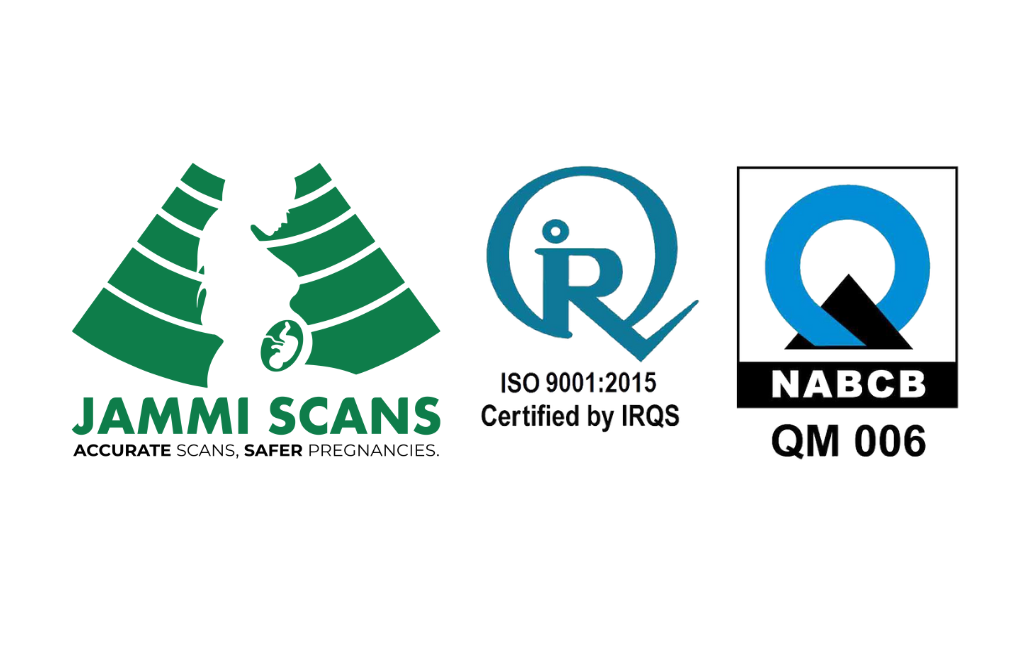Amniocentesis (T. Nagar, Chennai)
Book an Amniocentesis Test with Dr. Deepthi Jammi Today
🕘 Choose your convenient time slot between: 8.30 AM - 6 PM
📍 Visit us: No. 14, Jagadeeswaran St, T. Nagar, Chennai, Tamil Nadu 600017
What is Amniocentesis?
An amniocentesis is a prenatal test that allows your fetal medicine specialist to extract a sample of amniotic fluid from the uterus to diagnose chromosomal abnormalities in the baby.
The amniotic fluid contains skin cells shed from the baby and can diagnose chromosomal abnormalities such as Down syndrome.
Amniocentesis produces a karyotype – a picture of the baby’s chromosomes – to determine any abnormalities. (In about 1 percent of cases, there’s a problem with the specimen, and the test doesn’t yield a result.)
Amniocentesis is usually done when a woman is between 16 and 20 weeks pregnant. Though all women have the option of having an amniocentesis, women for whom this test is recommended are often those at increased risk for genetic and chromosomal problems. The test is invasive and carries a small chance of miscarriage (0.01%)

Amniocentesis at Jammi Scans
Amniocentesis
Worried about your Amniocentesis test result? Get a second opinion from the best fetal medicine specialist in Chennai, Dr. Deepthi Jammi
Experience
With over 15 years of experience, Dr. Deepthi Jammi has performed over 1,50,000 successful scans.
Same Day Report
We understand your nervousness after a scan, so we provide same-day reports to ease your mind and save your time.
Book Appointment
Contact Jammi scans at 7338771733 for appointments to visit our pregnancy scan centre in T. Nagar, Chennai.
Latest Technology
We use the latest, high-quality ultrasound technology for our scans.
How is Amniocentesis performed?
The procedure usually takes about 15 minutes. Before the process, an ultrasound is done to measure the baby and check the basic anatomy.
The abdomen is cleaned with a sterile solution to minimize infection risk for the procedure itself. Then, ultrasound is used to pinpoint a pocket of amniotic fluid safe from both the baby and the placenta. This part can take up to 10 minutes.
Then, under continuous ultrasound guidance, the doctor inserts a long, thin, hollow needle through the abdominal wall and into the sac of fluid around the baby. The doctor withdraws a small amount of amniotic fluid and then removes the needle.
Sometimes, not enough fluid is removed the first time the needle is inserted. If this happens, the needle will be inserted again. Withdrawing the fluid can take a few minutes but usually takes less than 30 seconds. The baby will make more fluid to replace what’s taken out.
The amniotic fluid, which contains cells shed by the baby, is sent to the laboratory for analysis. The first level of reporting (initial confirmation) will be available in 10 to 15 days, and the final report will be available in 4 weeks.
Afterwards, the doctor may use an external fetal monitor to listen to the baby’s heartbeat for reassurance.
Why is Amniocentesis Recommended?
It may be recommended for the following reasons:
- Suppose the patient is 37 years or older. Anyone can have a baby with a chromosomal abnormality, but the risk rises with the mother’s age. For example, the likelihood of carrying a baby with Down syndrome increases from about 1 in 1,200 at age 25 to 1 in 100 at age 40.
- A pregnancy screening test has suggested there may be a problem, such as Down’s syndrome, Edwards’ syndrome or Patau’s syndrome.
- The mother has had a previous pregnancy with these problems with Trisomy 21, 13 or 18.
- An abnormality is detected in the baby during a routine ultrasound scan.
- To diagnose or rule out an intrauterine infection.
- If too much amniotic fluid is accumulated (polyhydramnios), amnio reduction might be made to drain excess amniotic fluid from the uterus
- Suppose the patient is 37 years or older. Anyone can have a baby with a chromosomal abnormality, but the risk rises with the mother’s age. For example, the likelihood of carrying a baby with Down syndrome increases from about 1 in 1,200 at age 25 to 1 in 100 at age 40.
Is Amniocentesis Painful?
Amniocentesis isn’t usually painful, but the patient may feel cramping, pinching, or pressure and uncomfortable during the procedure.
Some women describe experiencing a pain similar to period pain or feeling pressure when the needle is taken out. The amount of discomfort or pain varies among women and even from one pregnancy to the next.
How long does the Amniocentesis test take?
The procedure usually takes around 15 minutes to perform.
Afterwards, the patient will be monitored for up to an hour if the test causes any side effects, such as heavy bleeding.
Estimates vary, but research suggests that the loss rate from the procedure is around 1 in 100 to 200.
What Disorders and Defects Can Amniocentesis Detect?
Amniocentesis is used to detect nearly all chromosomal disorders, including Down syndrome, trisomy 13, trisomy 18, and sex chromosome abnormalities (such as Turner syndrome). However, while the test can diagnose these conditions, it can’t measure their severity.
It can also detect several hundred other genetic disorders, such as cystic fibrosis, sickle cell disease, and Tay-Sachs disease.
The test is not used to look for all of them, but if the baby is at increased risk for one or more of these disorders, amniocentesis can usually tell whether the baby has the disease.
What is the Risk of Miscarriage from Amniocentesis?
The risk of miscarriage due to amniocentesis is low. Because a certain percentage of women will end up miscarrying in the second trimester anyway, there’s no way of knowing for sure whether the procedure actually caused a miscarriage following an amniocentesis.
Estimates vary, but research suggests that the loss rate from the procedure is around 1 in 100 to 200.
Before the patient decides to have amniocentesis, the doctor will convey the risks and possible complications.
Some Other Risks Include
There are also some other risks, such as infection or needing to have the procedure again because it wasn’t possible to test the first sample that was removed accurately.
The risk of amniocentesis causing complications is higher if it’s carried out before the 15th week of pregnancy, which is why the test is only carried out after this point.
- Cramps after the procedure.
- A small amount of vaginal bleeding after the procedure.
- Rarely, amniocentesis may cause amniotic fluid to leak.
- Another rare complication is a uterine infection. A severe infection happens in about 1 in 1000 women (0.1%).
- If the mother has an infection such as Hepatitis C or HIV, amniocentesis can cause the infection to transfer to the unborn baby.
- Needle injury – during amniocentesis, the baby might move an arm or leg into the path of the needle. Serious needle injuries are rare and are usually taken care of since it is an ultrasound-guided procedure.
- Rh sensitization – rarely, amniocentesis might cause the baby's blood cells to enter the mother's bloodstream. Suppose the mother has Rh-negative blood and has not developed antibodies to Rh-positive blood. In that case, the mother will be given an injection of a blood product called Rh immune globulin after amniocentesis. This will prevent the body from producing Rh antibodies that can cross the placenta and damage the baby's red blood cells. A blood test can detect if the mother has begun to produce antibodies.
How can the patient decide what's right for her?
First, doctors can only recommend second-trimester screening and diagnostic testing options, but whether or not to test is a personal decision of the mother and her family.
Some possible choices are:
- Opt for ultrasound-based screening and then decide on diagnostic testing (invasive procedures) based on the initial results.
- Undergo diagnostic testing right away.
- Have no screening or testing.
If the patient opts for screening first, she can then decide — with the doctor’s help — whether the results indicate a high enough risk that a CVS or amniocentesis is required to confirm whether a problem exists. The patient will need to weigh the need to know about the baby’s condition against the small chance that diagnostic testing could cause a miscarriage.
A few conditions may be detected while the baby is still in the womb. So if there’s a strong suspicion that the baby may have one of these rare problems, an amniocentesis can help find out.
Recovering After Amniocentesis
After amniocentesis, it’s normal to have cramps similar to period pain and light vaginal bleeding called “spotting” for a day or two.
It is advised to avoid any strenuous activity for a few days following the procedure.
However, the patient should contact the obstetrician in case of the following symptoms:
- persistent or severe pain
- a high temperature of 38C (100.4F) or more chills or shivering
- discharge or clear fluid coming from the vagina
- contractions (when your abdomen tightens then relaxes)
- Loss of vaginal fluid or vaginal bleeding
- Severe uterine cramping that lasts more than a few hours
- Redness and inflammation where the needle was inserted
- Unusual fetal activity or a lack of fetal movement
Frequently Asked Questions
1. What happens if the amniocentesis test is positive?
A positive result suggests that the fetus has the genetic problem tested for. In this case, your doctor will discuss the results with a genetic counsellor. They can help you understand the problem, talk to you about your options, and help you decide what to do next.
2. When should you do amniocentesis?
Genetic amniocentesis is usually performed between weeks 15 and 20 of pregnancy. It is known that amniocentesis done before week 15 of pregnancy is associated with higher rates of complications.
3. Is amniocentesis safe for the baby?
There is a small risk associated with your baby during amniocentesis. This is approximately less than 1%. Other very rare complications can be injury to the baby or mother, infection, and preterm labor.
4. Can an amniocentesis be wrong?
Amniocentesis gives a definitive result. It has a reliable rate of 98%. However, it can’t pick all genetic problems or other abnormalities.
5. Which disease cannot be detected by amniocentesis?
The test checks for fetal abnormalities (birth defects) such as Down syndrome, cystic fibrosis or spina bifida. Other genetic problems, or neural problems, and Rh incompatibility cannot be detected by amniocentesis. Talk to your doctor to be well informed before the procedure.





